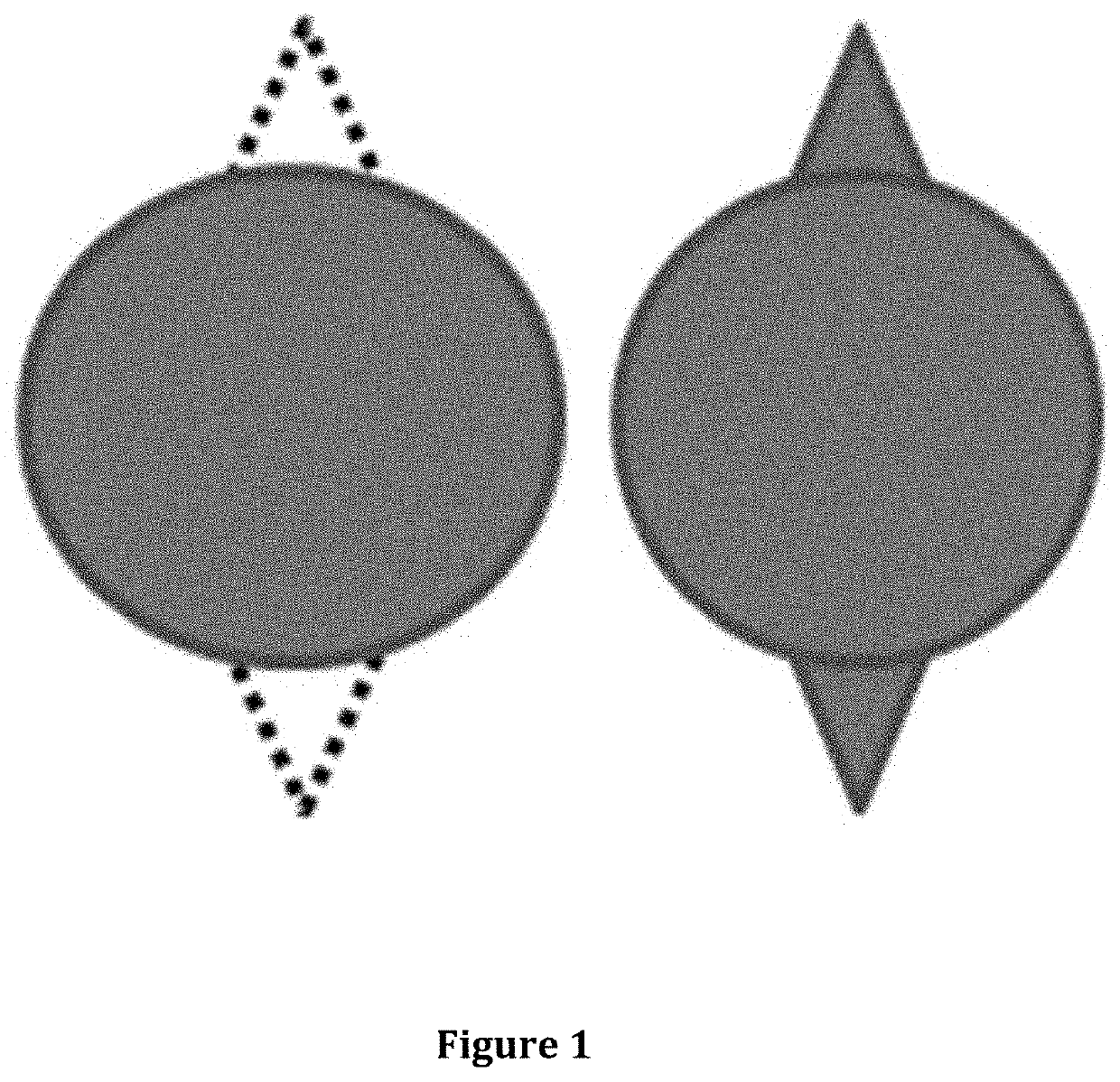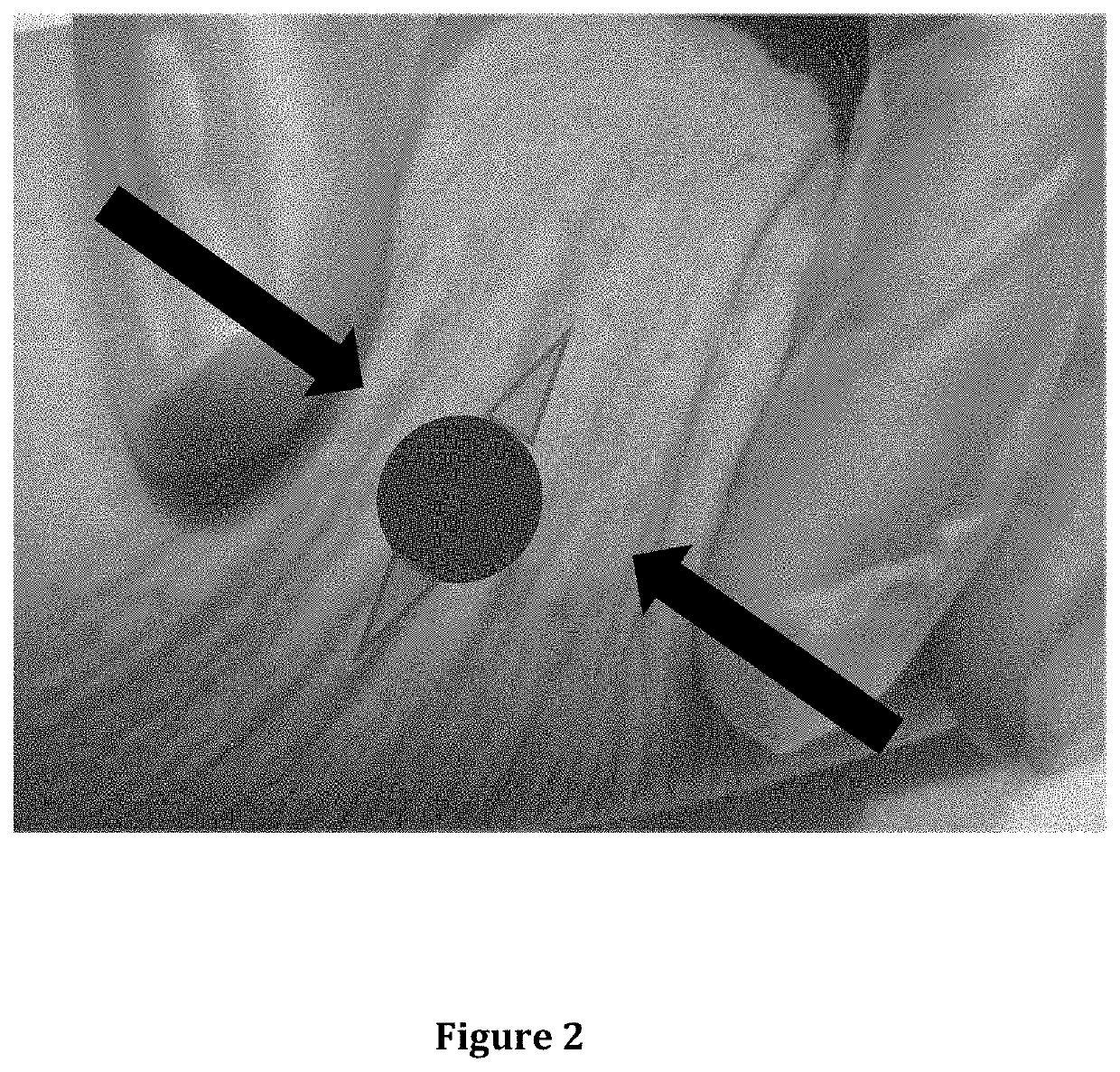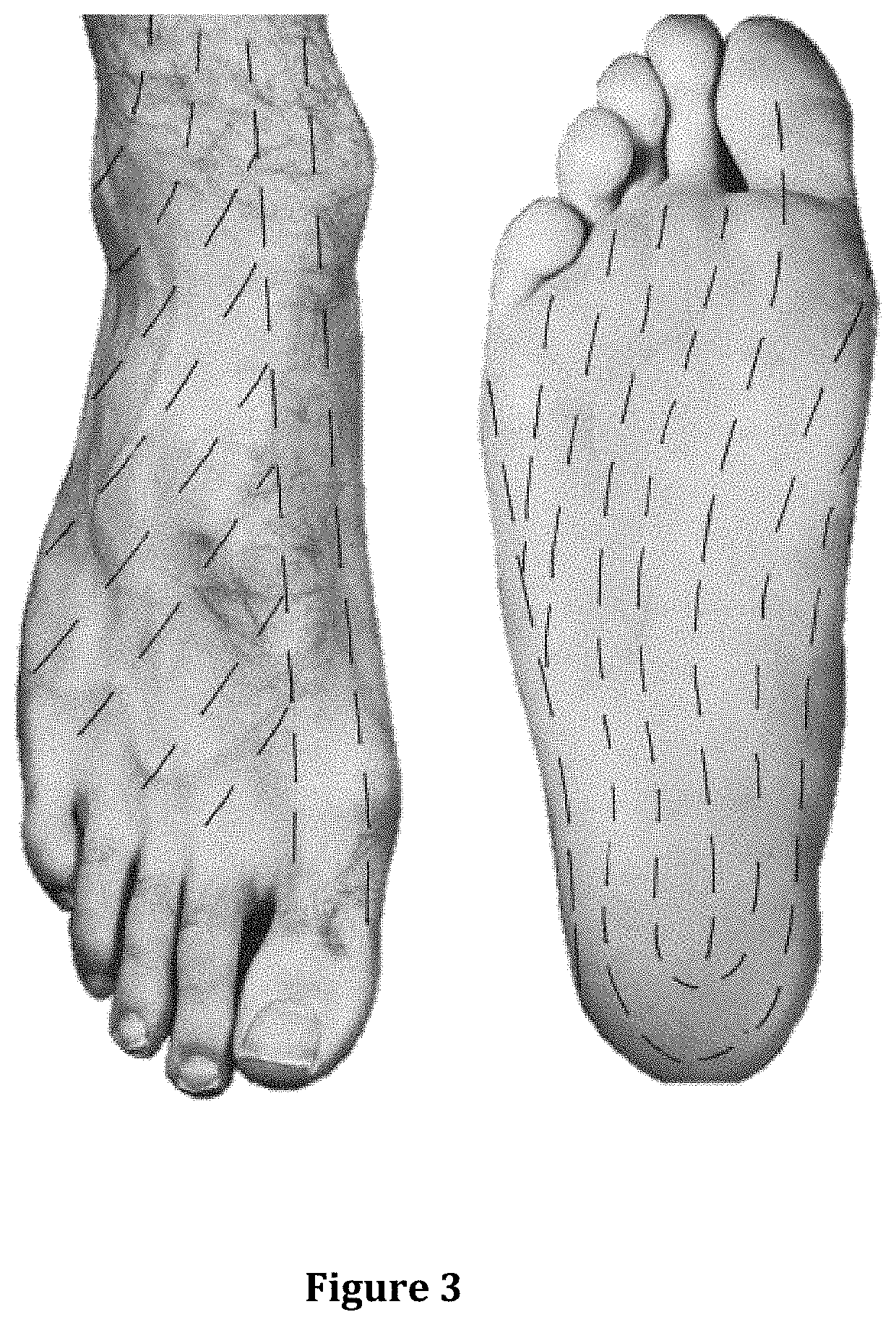Apical surgical wound debridement
a surgical wound and apical technology, applied in the field of wound care, can solve the problems of chronic wound development, limited guidance and research behind the technique of surgical debridement, and the burden on patients and the health care system, so as to facilitate wound closure, facilitate epithelial cell migration, and relieve the tension of the wound perimeter
- Summary
- Abstract
- Description
- Claims
- Application Information
AI Technical Summary
Benefits of technology
Problems solved by technology
Method used
Image
Examples
example 1
Apical Debridement Examples
[0028]Five diabetic male patients with chronic wounds have apical wound debridement with the application of bidirectional tension towards the wound. Apical debridement is added to the original wound care treatment and a noticeable difference in wound geometry is noted and demonstrated in the photos of 5 male patients utilizing the methods of the present invention.
[0029]In FIG. 1, the dotted line represents the apex debridement at the two most extreme ends of a wound. Although there is more damage to the surrounding healthy and viable soft tissue, there is a geometrical benefit that transforms a circular wound to one that is more linear in nature.
[0030]In FIG. 2 is illustrated the second step in the present invention. After apical wound debridement, it is beneficial to further reduce wound edge tension by applying bidirectional force towards the wound as represented by the arrows. Decreasing wound tensions along the perimeter of the wound allows the skin ed...
example 2
[0035]The present invention relates to apical debridement is anatomically versatile and is applied to any well perfused wound on the body that would benefit from surgical wound debridement. This apical wound debridement technique better explains the reasoning and geometric advantage of apical excision and provides a more aggressive surgical debridement for both acute and chronic wounds. Apical wound debridement is a more detailed and valuable modification to the generic “surgical debridement” technique which has a limiting definition of debriding the wound bed and wound edges to the point of healthy bleeding tissue with preservation of the surrounding viable tissue.
[0036]Apical wound debridement techniques are used on their own without any other wound care products on acute wounds in healthy individuals. However, with chronic wounds, the healing process is significantly compromised needing the assistance of external wound care products along with effective wound debridement. Apical ...
example 3
[0063]This debridement technique is useful in conjunction with any wound care product or skin substitute as long as the patient is a candidate that tolerates surgical wound debridement with viable and adequate blood supply to the wound site. These wound products / skin substitutes adhere better to the wound base with wound debridement. These wound care products are thus better able to be more effective with this debridement / tension reduction technique due to the more aggressive nature of the debridement and the reduction of periwound tension. The application of reinforcement skin closure across the wound acts as a “wound splint” to prevent movement of the freshly formed epithelial cells, reduce periwound tension and reduce frictional forces that could potentially alter periwound tension and interfere with the viability of newly formed skin cells.
[0064]The positive effects of manipulating wound geometry using apical wound debridement and wound tension relief are not only useful for use...
PUM
 Login to View More
Login to View More Abstract
Description
Claims
Application Information
 Login to View More
Login to View More - R&D
- Intellectual Property
- Life Sciences
- Materials
- Tech Scout
- Unparalleled Data Quality
- Higher Quality Content
- 60% Fewer Hallucinations
Browse by: Latest US Patents, China's latest patents, Technical Efficacy Thesaurus, Application Domain, Technology Topic, Popular Technical Reports.
© 2025 PatSnap. All rights reserved.Legal|Privacy policy|Modern Slavery Act Transparency Statement|Sitemap|About US| Contact US: help@patsnap.com



